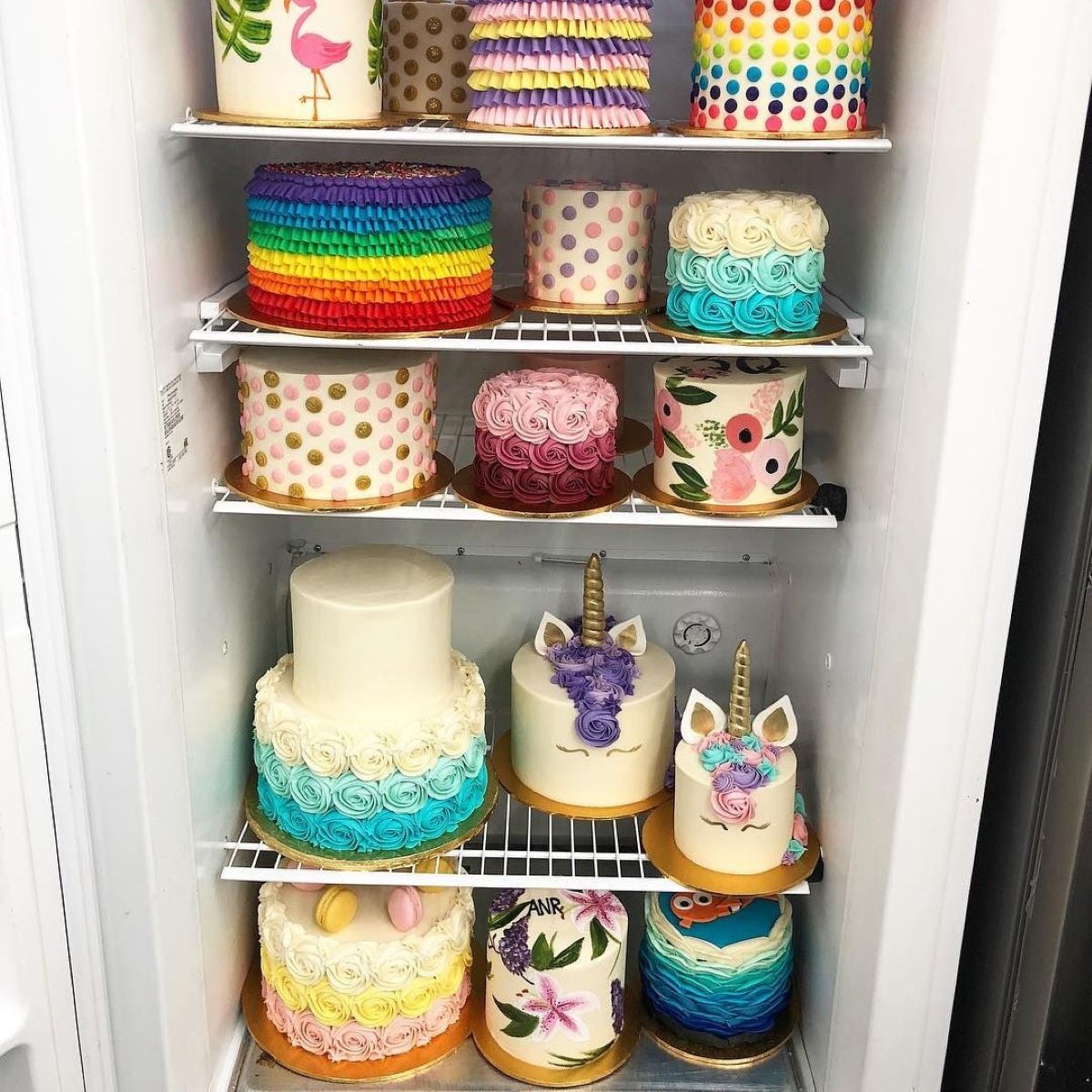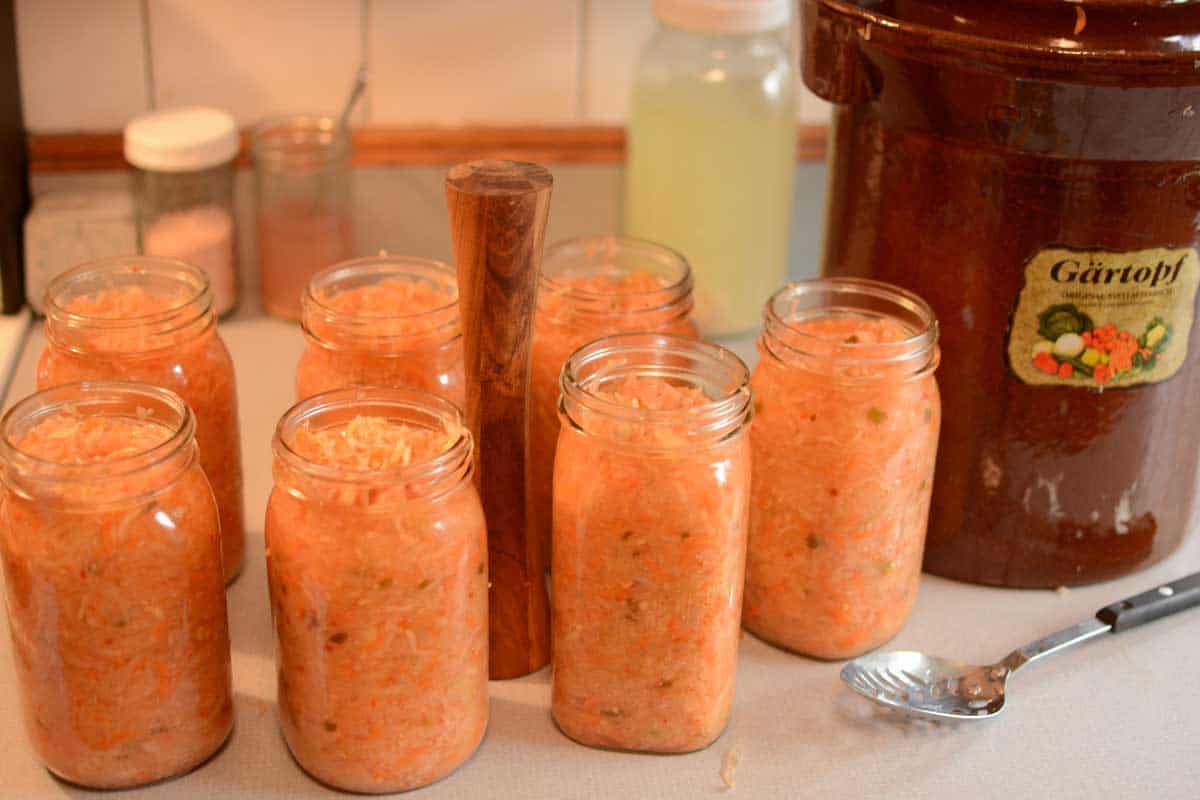

Articles
How To Store Homemade Fondant
Modified: December 7, 2023
Learn how to store homemade fondant in this helpful article. Discover tips and tricks to keep your fondant fresh and ready to use.
(Many of the links in this article redirect to a specific reviewed product. Your purchase of these products through affiliate links helps to generate commission for Storables.com, at no extra cost. Learn more)
Introduction
Homemade fondant is a versatile and delicious ingredient that can elevate the appearance of any cake or dessert. Whether you’re a professional baker or a passionate home cook, knowing how to store homemade fondant properly is essential to maintain its freshness and quality.
Unlike store-bought fondant, homemade fondant contains no preservatives or additives, making it more susceptible to spoilage if not stored correctly. The key to prolonging the shelf life of your homemade fondant lies in maintaining the right temperature and protecting it from moisture and air exposure.
In this article, we will guide you through the step-by-step process of storing homemade fondant to ensure its longevity and preserve its taste and texture. So, let’s gather our supplies and get started!
Key Takeaways:
- Properly storing homemade fondant is essential for maintaining its freshness and quality. Follow the steps outlined in this article to ensure your fondant stays fresh and ready to elevate your baking creations.
- Whether refrigerating, storing at room temperature, or freezing, tightly wrapping homemade fondant is crucial to prevent air and moisture exposure. Remember to follow recommended storage conditions and handle with care to maintain its quality.
Read more: How To Store Fondant
Supplies Needed
Before we dive into the process of storing homemade fondant, let’s make sure you have all the necessary supplies on hand. Here’s what you’ll need:
- Airtight Container: Look for a container that can seal tightly to prevent air and moisture from entering.
- Parchment Paper: This will be used to wrap the fondant and prevent it from sticking to the container.
- Plastic Wrap: This will provide an extra layer of protection for the fondant.
- Refrigerator or Pantry: Depending on the storage method you choose, you’ll either need a refrigerator or a cool, dry pantry.
Once you have these supplies ready, you’ll be prepared to store your homemade fondant properly and ensure its optimal freshness.
Step 1: Preparing the Fondant
Before you can store your homemade fondant, it’s important to ensure that it’s properly prepared. Follow these steps to prepare your fondant for storage:
- Knead the Fondant: Start by kneading the fondant on a clean and lightly powdered surface. This will help to remove any air bubbles and make the fondant smoother.
- Wrap in Plastic Wrap: Once the fondant is kneaded, shape it into a smooth ball and wrap it tightly in plastic wrap. This will prevent it from drying out and forming a crust.
- Let it Rest: Allow the fondant to rest at room temperature for about 30 minutes before storing it. This resting period will help the fondant to settle and become more pliable.
By following these steps, you’ll ensure that your fondant is in the best possible condition for storage.
Step 2: Wrapping the Fondant
Once your fondant is prepared and ready for storage, it’s time to wrap it properly. Here’s how to wrap your fondant:
- Prepare Parchment Paper: Cut a piece of parchment paper large enough to wrap around the fondant completely.
- Place Fondant on Parchment Paper: Put the fondant ball in the center of the parchment paper.
- Wrap the Fondant: Start by folding one side of the parchment paper over the fondant ball, then fold the other side on top, covering the fondant completely.
- Secure with Plastic Wrap: Next, wrap the parchment paper-covered fondant tightly with plastic wrap. This will provide an additional layer of protection.
Ensuring that the fondant is tightly wrapped will prevent air and moisture from reaching it, helping to maintain its freshness. It will also prevent the fondant from drying out or becoming too soft.
Now that your fondant is wrapped securely, it’s time to decide how you want to store it. Depending on your needs and preferences, you can choose between refrigeration or room temperature storage. Let’s explore both options in the following steps.
Step 3: Storing in the Refrigerator
If you prefer to store your homemade fondant in the refrigerator, follow these steps:
- Select the right container: Choose an airtight container that can accommodate the size of your wrapped fondant without squishing or deforming it.
- Place the wrapped fondant in the container: Gently place the wrapped fondant into the container, making sure it sits flat and is not crowded.
- Seal the container: Ensure that the container is tightly sealed to prevent any exposure to air and moisture.
- Store in the refrigerator: Place the container in the refrigerator, ideally in the colder part where the temperature remains consistent.
Storing fondant in the refrigerator helps to prolong its shelf life and maintain its shape and texture. It is especially beneficial during hot weather or in humid environments, where the fondant can soften or become sticky quickly.
Note that when you take the fondant out of the refrigerator to use it, allow it to come to room temperature before working with it. This will make it easier to roll, shape, and cover your cakes or desserts.
Now that you’ve learned how to store fondant in the refrigerator, let’s explore the alternative option of storing it at room temperature.
Store homemade fondant in an airtight container at room temperature, away from direct sunlight. It can last for several weeks if stored properly. If it becomes too hard, microwave it for a few seconds to soften.
Read more: How To Store Fondant Covered Cookies
Step 4: Storing at Room Temperature
If you prefer to store your homemade fondant at room temperature, here’s what you need to do:
- Find a cool, dry spot: Look for a cool area in your kitchen or pantry away from direct sunlight, heat sources, and humidity.
- Select a suitable container: Choose an airtight container that is large enough to accommodate the wrapped fondant without squishing or deforming it.
- Place the wrapped fondant in the container: Gently place the wrapped fondant into the container, making sure it sits flat.
- Seal the container: Ensure that the container is tightly sealed to minimize exposure to air and moisture.
Storing fondant at room temperature is suitable for short-term storage and when the ambient temperature is cool and stable. It works well when you anticipate using the fondant within a couple of weeks.
However, keep in mind that room temperature storage is not recommended in hot and humid climates, as the fondant can soften, become sticky, or even melt.
When you’re ready to use the fondant after storing it at room temperature, allow it to come to room temperature naturally before working with it. This will ensure that it is pliable and easy to use.
Now that you know how to store fondant at room temperature, let’s move on to the next step, which is storing fondant for long-term use.
Step 5: Storing for Long-Term Use
If you need to store homemade fondant for an extended period, such as several months, follow these steps:
- Prepare the fondant for freezing: Wrap the fondant tightly in plastic wrap, ensuring there are no air pockets. Then, place it in a freezer-safe container or zip-top bag.
- Label and date the container or bag: Write the date of freezing on the container or bag. This will help you keep track of how long it has been stored.
- Freeze the fondant: Place the fondant in the freezer, ideally in a spot where it won’t get crushed or damaged.
Freezing the fondant allows you to store it for an extended period while preserving its quality. It is particularly useful when you make a large batch of fondant but only need a small amount at a time.
When you’re ready to use the frozen fondant, take it out of the freezer and allow it to thaw in the refrigerator overnight. Once thawed, bring the fondant to room temperature before using it.
It’s important to note that freezing fondant can affect its texture and elasticity. Therefore, it’s best to use frozen fondant for covering cakes or decorations rather than intricate designs that require intricate details.
Now that you’ve learned how to store fondant for long-term use, let’s explore some tips for maintaining its freshness.
Tips for Maintaining Freshness
To ensure the freshness and quality of your homemade fondant during storage, consider the following tips:
- Keep it airtight: Whether you store your fondant in the refrigerator, at room temperature, or in the freezer, make sure it is tightly sealed in an airtight container or wrapped in plastic wrap. This will prevent air and moisture from reaching the fondant and causing it to dry out or become sticky.
- Avoid temperature fluctuations: Fondant is sensitive to temperature changes, so try to minimize exposing it to extreme temperature variations. This includes keeping it away from direct sunlight, heat sources, or areas with high humidity.
- Handle with clean hands: When working with fondant, always wash your hands thoroughly to remove any dirt, oils, or contaminants. This will help maintain the freshness and cleanliness of the fondant.
- Store in a cool and dry location: Whether you choose to store your fondant in the refrigerator or at room temperature, make sure the storage area is cool and dry. Excess heat and humidity can cause the fondant to soften, melt, or become sticky.
- Rotate the stock: If you’re making fondant in larger quantities or often, ensure you use the oldest batch first. This way, you can avoid having fondant sit unused for an extended period.
By following these tips, you’ll maximize the freshness and shelf life of your homemade fondant, ensuring that it’s always ready to be used for your baking creations.
Conclusion
Storing homemade fondant properly is crucial to maintain its freshness, taste, and texture. By following the steps outlined in this article and implementing the tips provided, you can extend the shelf life of your fondant and ensure that it’s always ready to use for your baking projects.
Whether you choose to store your fondant in the refrigerator, at room temperature, or in the freezer, remember to keep it tightly wrapped in an airtight container or plastic wrap to prevent air and moisture from affecting its quality. Additionally, take note of the recommended temperature and humidity conditions for optimal storage.
Clearly label and date your fondant containers or bags, especially if you decide to store it for long-term use in the freezer. This will help you keep track of how long the fondant has been stored.
Remember to allow your fondant to come to room temperature before using it after refrigeration or freezing. This will ensure it’s pliable and easy to work with, allowing you to achieve smooth and professional-looking cake decorations.
By following these guidelines, you can confidently store your homemade fondant and have it on hand whenever you need to add a touch of elegance and creativity to your cakes, cupcakes, and other confections.
So, don’t let your homemade fondant go to waste! Take the time to store it properly, and you’ll be able to enjoy its deliciousness and aesthetic appeal for an extended period.
Frequently Asked Questions about How To Store Homemade Fondant
Was this page helpful?
At Storables.com, we guarantee accurate and reliable information. Our content, validated by Expert Board Contributors, is crafted following stringent Editorial Policies. We're committed to providing you with well-researched, expert-backed insights for all your informational needs.















0 thoughts on “How To Store Homemade Fondant”